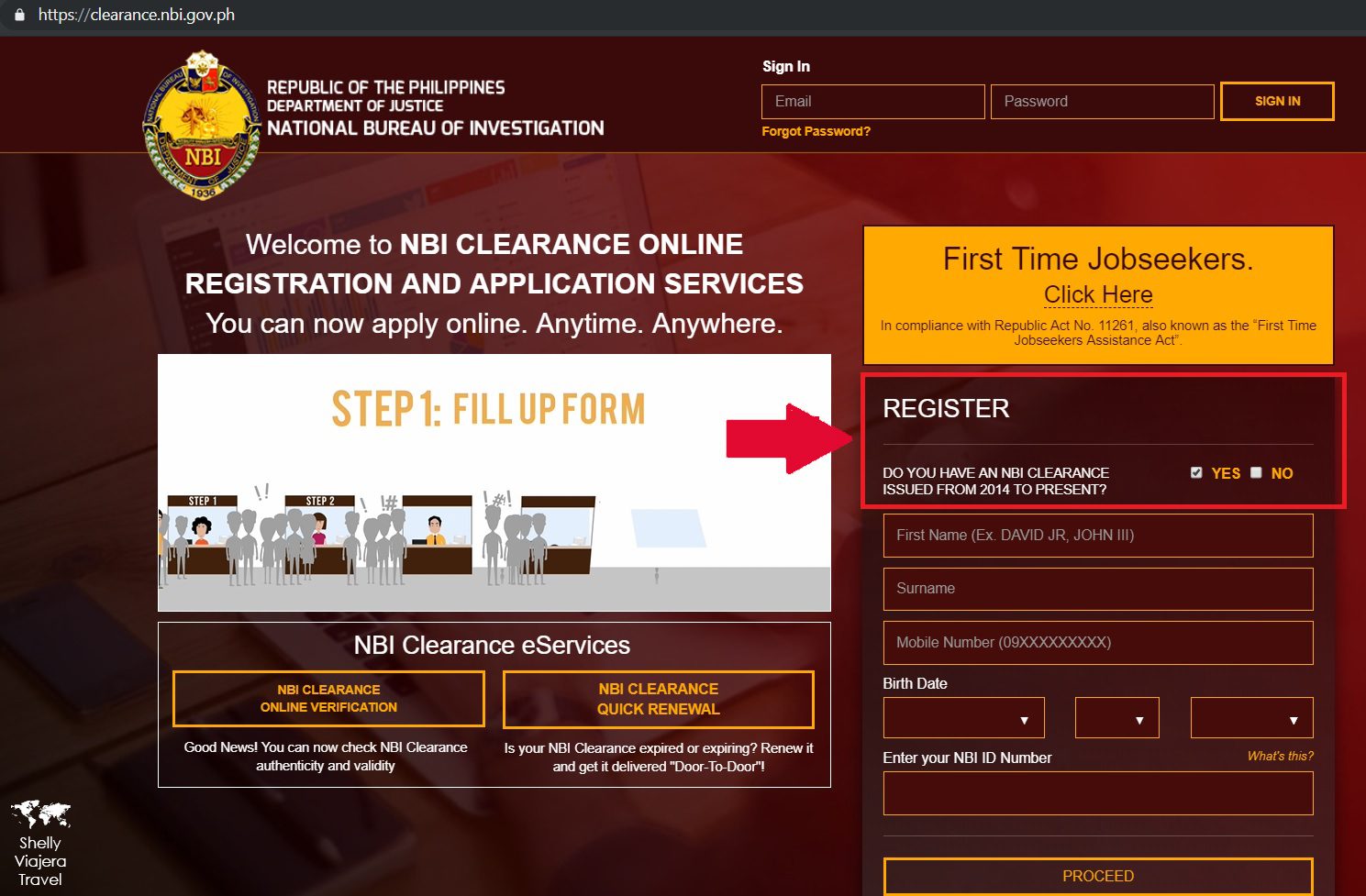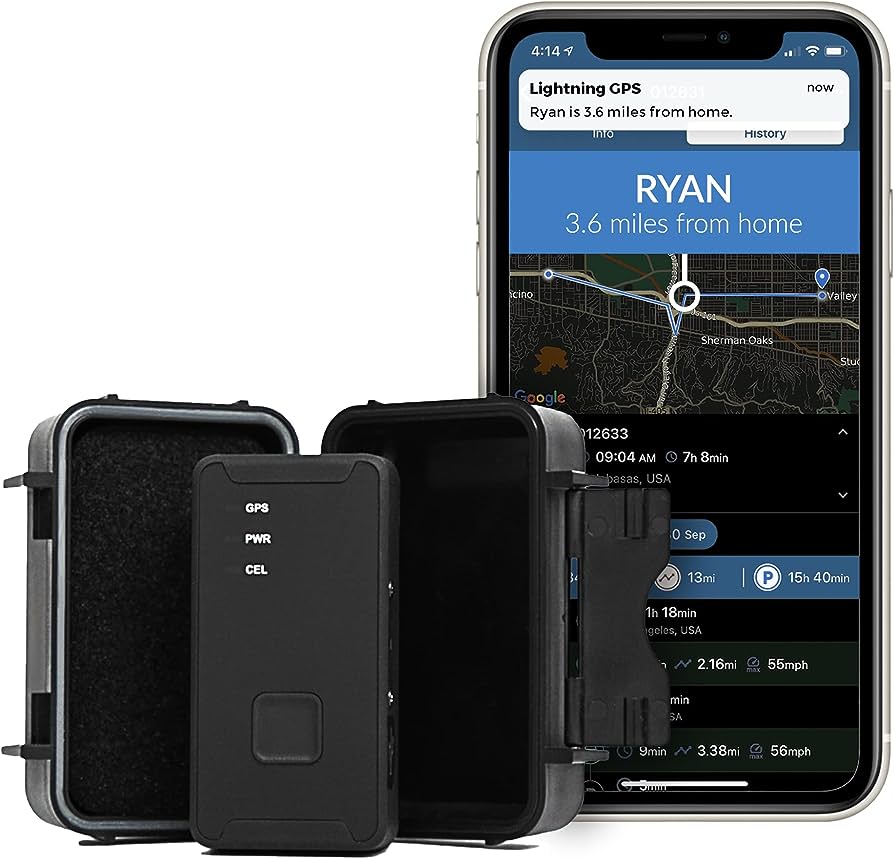To track satellites, use specialized software or websites that provide real-time satellite tracking data. These tools use satellite orbit data to determine the location and trajectory of specific satellites.
Additionally, you can track satellites by observing them directly through a telescope or with the naked eye, using information provided by organizations like NASA.
Understanding Satellite Orbits
Satellite orbits are essential for tracking satellites. Understand how to track satellites and monitor their movements through various orbital paths for improved communication and navigation.
Satellites play a pivotal role in our modern world, enabling global communication, navigation, weather forecasting, and scientific research. To effectively track satellites, it is essential to understand the different types of satellite orbits they follow. This knowledge allows us to determine their location at any given moment and anticipate their movements.
In this section, we will explore the three primary satellite orbits: Low Earth Orbit (LEO), Medium Earth Orbit (MEO), and Geostationary Orbit (GEO), along with their pros and cons.
Different Types Of Satellite Orbits
Low Earth Orbit (Leo)
- Satellites in Low Earth Orbit are located between 180 and 2,000 kilometers above the Earth’s surface.
- LEO orbits are characterized by their relatively high speeds, as satellites complete an orbit in approximately 90 minutes.
- Benefits of LEO include low latency, making them ideal for applications requiring real-time communication and remote sensing.
- LEO satellites are commonly used for Earth observation, tracking weather patterns, and providing internet connectivity, such as in constellations like SpaceX’s Starlink.
Medium Earth Orbit (Meo)
- Positioned between 2,000 and 35,786 kilometers above the Earth, Medium Earth Orbit is home to navigation satellites like the Global Positioning System (GPS).
- Satellites in MEO have longer orbital periods compared to LEO, typically taking 2-24 hours to complete an orbit.
- MEO orbits strike a balance between LEO and GEO, offering a wider coverage area for navigation and communication services.
- While MEO satellites provide reliable global positioning capabilities, they are limited in their ability to transmit high-speed data due to higher latency.
Geostationary Orbit (Geo)
- Geostationary Orbit involves satellites positioned around 35,786 kilometers above the Earth’s equator, orbiting at the same speed as the Earth’s rotation.
- Satellites in GEO remain fixed relative to a specific location on Earth, appearing stationary from the ground.
- GEO satellites are commonly used for television broadcasting, communication services, and weather monitoring.
- The main advantage of GEO orbits is their uninterrupted coverage over large areas, but they suffer from higher latency due to their distance from the Earth.
Pros And Cons Of Each Orbit Type
Low Earth Orbit (LEO):
- Pros:
- Lower latency, allowing real-time communication and remote sensing.
- Suitable for Earth observation and weather tracking.
- Enables high-speed internet connectivity through satellite constellations.
- Cons:
- Require a larger number of satellites to provide global coverage.
- Frequent orbital changes and close proximity to Earth increase the risk of collisions.
Medium Earth Orbit (MEO):
- Pros:
- Reliable global positioning capabilities for navigation systems like GPS.
- Offers a balance between coverage area and latency.
- Cons:
- Limited ability to transmit high-speed data.
- Longer orbital periods compared to LEO.
Geostationary Orbit (GEO):
- Pros:
- Uninterrupted coverage over large areas, ideal for television broadcasting and communication services.
- Stationary relative to a specific Earth location.
- Cons:
- Higher latency due to the greater distance from the Earth.
- Limited coverage of polar regions.
Understanding the characteristics and advantages of each satellite orbit allows us to grasp the intricacies of satellite tracking. By tracking satellites in different orbits, we can harness their full potential for various applications and ensure efficient utilization of space-based technologies.
Essential Tools For Satellite Tracking
Discover the essential tools for tracking satellites efficiently. Learn the steps to effectively track satellites and stay updated with their locations.
Satellite tracking is an exciting hobby that requires a few essential tools to get started. In this section, we’ll explore the must-have tools for satellite tracking, including telescope systems and satellite tracking software. Let’s dive in!
Telescope Systems
To effectively track satellites, you need a reliable telescope system. Here are a few types of telescopes commonly used for satellite tracking:
- Refractor Telescopes: These telescopes use lenses to gather and focus light, providing clear and crisp images. They are compact and easy to use, making them a popular choice for beginners.
- Reflecting Telescopes: These telescopes use mirrors instead of lenses to capture and reflect light. They offer a larger aperture, allowing for better light-gathering capability and sharper images. Reflecting telescopes are suitable for both beginners and advanced users.
- Catadioptric Telescopes: These telescopes combine lenses and mirrors to create a compact design. They offer a good balance between size and image quality, making them a versatile choice for satellite tracking.
Considerations When Choosing A Telescope
When selecting a telescope for satellite tracking, keep the following considerations in mind:
- Aperture Size: The aperture size determines how much light the telescope can gather. Larger apertures provide better image quality, particularly when tracking dim satellites.
- Mounting System: Choose a telescope with a stable mounting system, such as an equatorial mount, for precise tracking and smooth movement.
- Portability: If you plan to take your telescope to different locations for satellite tracking, consider its weight and portability. Lightweight and compact telescopes are ideal for travel.
Satellite Tracking Software
Satellite tracking software plays a crucial role in tracking and predicting the paths of satellites. Here are some popular options to consider:
- Stellarium: A free and open-source planetarium software that allows you to track and visualize satellites in real-time. It offers a user-friendly interface and comprehensive satellite tracking features.
- Orbitron: A Windows-based satellite tracking software that provides real-time satellite tracking, prediction, and visualization. It supports various tracking methods and offers precise orbital data.
- Heavens Above: A web-based satellite tracking platform that offers an extensive satellite catalog, visibility predictions, and sky charts. It provides accurate information for tracking satellites from your location.
Features To Look For In Tracking Software
When choosing satellite tracking software, consider the following important features:
- Real-time Tracking: Look for software that offers real-time satellite tracking to see the current positions of satellites accurately.
- Orbit Prediction: The software should provide accurate orbit predictions to anticipate when and where a satellite will be visible.
- Customization Options: Choose software that allows you to customize settings and filters to tailor the tracking experience to your preferences.
Now that you have an overview of essential tools for satellite tracking, you’ll be well-equipped to embark on this fascinating adventure. Happy satellite tracking!
Methods For Satellite Tracking
Learn effective methods to track satellites and ensure accurate data collection. Discover various techniques and tools to monitor satellite movements and gather valuable information for scientific research and communication purposes.
Satellite tracking methods offer a fascinating way to observe and monitor satellites as they orbit the Earth. Whether you’re an amateur astronomer, a space enthusiast, or a professional in the field, tracking satellites can provide valuable insights into their movements and activities.
In this section, we will explore three popular methods for satellite tracking: visual tracking, radio tracking, and online tracking.
Visual Satellite Tracking
Visual tracking involves using your naked eye to spot satellites as they pass overhead. It’s a relatively simple and accessible method that can be done with minimal equipment. Here are some key aspects of visual satellite tracking:
- How to Spot Satellites in the Sky: Look for fast-moving points of light that resemble stars. Satellites are visible primarily during twilight hours or in dark skies away from light pollution.
- Tips for Successful Visual Tracking: To improve your chances of spotting satellites, follow these tips:
- Find a location with a clear view of the horizon.
- Use apps or websites that provide satellite pass predictions, allowing you to plan your observations.
- Be patient and focused, as satellites pass quickly and may require some time to locate.
Radio Satellite Tracking
Radio satellite tracking involves detecting and interpreting signals emitted by satellites. This method requires some technical knowledge and equipment. Let’s explore the key aspects of radio satellite tracking:
- Understanding Doppler Shift: Doppler shift refers to the change in frequencies of radio signals caused by the relative motion between the satellite and the observer. This shift provides valuable information about the satellite’s velocity, distance, and trajectory.
- Setting Up a Radio Tracking Station: To track satellites via radio signals, you’ll need a setup that includes the following components:
- A radio receiver capable of receiving satellite signals.
- An antenna with directional capabilities to focus on specific satellites.
- Appropriate software or tools to analyze the received signals.
Online Satellite Tracking
Online satellite tracking has become increasingly popular, offering convenient access to real-time satellite data and predictions. Here’s what you need to know about online satellite tracking:
- Utilizing Online Tracking Databases: Numerous online databases provide information about satellite orbits, positions, and visibility. These databases often include features like pass predictions, search functionalities, and orbital data.
- Real-Time Tracking Services: Some websites and applications offer real-time satellite tracking services. These services provide live satellite positions and footprints on interactive maps, allowing users to track satellites actively.
With these three methods – visual tracking, radio tracking, and online tracking – satellite enthusiasts can explore the incredible world of satellites in orbit. Each method offers unique advantages and can be used individually or in conjunction with others to enhance your satellite tracking experience.
So grab your binoculars, radio equipment, or dive into the online world of satellite tracking and embark on an exciting journey to uncover the secrets of the satellites above.
Tips For Effective Satellite Tracking
Looking to track satellites effectively? Check out these tips to enhance your satellite tracking skills and stay up-to-date with their movements. Explore ways to optimize your tracking techniques and never miss a satellite again.
Satellite tracking allows us to observe and monitor satellites as they orbit the Earth. Whether you’re an amateur astronomer or a space enthusiast, here are some tips to help you track satellites effectively.
Calculating Satellite Passes:
- Determine the location and time of your observation.
- Use satellite tracking software or websites to calculate the passes of specific satellites overhead.
- Consider factors such as elevation, azimuth, and duration of the pass to plan your observation.
Predicting Satellite Visibility:
- Understand the orbital characteristics of the satellite you want to track.
- Check the satellite’s altitude and inclination to determine its visibility from your location.
- Use satellite tracking tools to predict when the satellite will be visible and for how long.
Tools For Pass Prediction:
- Utilize dedicated satellite tracking software like Heavens-Above or Stellarium.
- Use online platforms such as N2YO or Satflare for real-time satellite tracking.
- Mobile applications like Satellite Tracker or ISS Detector can provide pass predictions on the go.
Observing Satellite Flares:
- Look for certain satellites, such as the Iridium constellation, that can produce bright flares due to sunlight reflection.
- Research the timing and position of potential flare events.
- Monitor the predicted flares using dedicated apps or websites to maximize your chances of witnessing this phenomenon.
Understanding Sunlight Reflections:
- Satellites become visible when they reflect sunlight towards the observer.
- The brightness of a satellite depends on factors such as its size, surface material, and solar panel orientation.
- Learn how different satellite characteristics affect their visibility and brightness in the sky.
Identifying Satellite Flare Events:
- Check databases or specialized websites that provide information on upcoming satellite flare events.
- Take note of the satellite’s location, brightness, and timing to prepare for flare sightings.
- Pay attention to magnitude values, as these indicate the brightness of the flare.
Tracking Satellite Transmissions:
- Equip yourself with a satellite tracking radio or software-defined radio (SDR) setup.
- Tune in to satellite communication frequencies to monitor transmissions.
- Research satellite frequencies beforehand to ensure accurate tracking and reception.
Monitoring Satellite Communication Frequencies:
- Use SDR software, such as GNU Radio or SDRSharp, to monitor and decode satellite communications.
- Choose the appropriate frequency range for the satellite you want to track.
- Decode satellite signals using suitable demodulators or software plugins specific to the modulation scheme.
Receiving And Decoding Satellite Signals:
- Set up a suitable antenna and receiver for the satellite frequencies you wish to track.
- Use SDR software to capture and demodulate the satellite signals.
- Decoding software like SDR#, SDRTrunk, or WXtoImg can help you extract and interpret the received satellite data.
Explore the wonders of satellite tracking by following these tips and embracing your curiosity for the celestial objects orbiting our planet. Happy tracking!
Advanced Satellite Tracking Techniques
Satellite tracking techniques have advanced significantly, making it easier than ever to track satellites. By utilizing advanced technology and innovative methods, satellite tracking has become a precise and efficient process. Discover how to track satellites effectively and stay updated on their movements.
:
Photographic Satellite Tracking:
- Photographic satellite tracking is a fascinating method used to monitor and capture images of orbiting satellites.
- By utilizing specialized techniques and equipment, enthusiasts and professionals alike can document the movement and appearance of various satellites.
Capturing Satellite Images:
- To capture satellite images, a powerful camera capable of zooming in and focusing on distant objects is essential.
- Choose a DSLR or mirrorless camera with a long lens to achieve crisp and detailed images.
- Follow these steps to capture satellite images:
- Set up your camera on a tripod for stability.
- Determine the satellite’s predicted location and time of passage using tracking software.
- Use a high ISO setting and a wide aperture for faster shutter speeds.
- Track the satellite through the viewfinder and continuously shoot photos during its transit.
Photographic Tracking Equipment:
- Besides a capable camera, several other equipment items enhance the photographic tracking experience:
- Telescope: Attach a telescope to your camera for increased magnification and improved visibility of satellites.
- Mounts: Utilize equatorial or altazimuth mounts to track satellites accurately as they traverse the sky.
- Remote Shutter Release: Use a remote shutter release or intervalometer to avoid camera shake during long-exposure shots.
Tracking International Space Station (Iss):
- The International Space Station (ISS) provides a captivating target for satellite tracking enthusiasts.
- To track the ISS effectively, follow these guidelines:
- Determine the ISS’s pass time and location using online resources or mobile apps.
- Find an open area with a clear view of the sky in the predicted direction of the ISS.
- Be patient and attentive as the ISS moves quickly across the sky during its flyby.
Spotting Iss In The Sky:
- Spotting the International Space Station in the night sky is an awe-inspiring experience.
- Follow these steps to easily locate the ISS:
- Look for a bright, moving object resembling a fast-moving plane.
- Note its steady and non-blinking light.
- Consider the time of the observation, as the ISS is visible mainly during dusk and dawn.
Iss Tracking Resources And Apps:
- Numerous online resources and mobile applications provide real-time information on the ISS’s position and visibility.
- Some popular ISS tracking resources and apps include:
- NASA’s Spot the Station: Provides email or text notifications for upcoming visible ISS passes in your area.
- Heavens Above: Offers an interactive map displaying the current location of the ISS and predictions for future passes.
- ISS Detector: A mobile app that notifies you of upcoming ISS sightings based on your location.
Tracking Amateur Satellites:
- Tracking amateur satellites can be an exciting endeavor for satellite enthusiasts.
- These satellites, launched by individuals or organizations, provide various services and experiments.
Amateur Radio Satellite Operations:
- Amateur radio satellites allow radio enthusiasts to communicate with users located in different parts of the globe through these orbiting stations.
- To track and communicate with amateur radio satellites, follow these steps:
- Obtain a ham radio license to legally operate on designated frequencies.
- Utilize tracking software or online resources to find the pass time and location of amateur satellites.
- Use a suitable antenna and radio transceiver to establish a connection during the satellite’s pass.
Joining The Amateur Satellite Community:
- Getting involved in the amateur satellite community opens up a world of shared knowledge and experiences.
- Consider these steps to join the community:
- Attend local ham radio clubs or satellite enthusiast gatherings to connect with like-minded individuals.
- Engage in online forums and discussion groups to stay updated on the latest advancements and events.
- Participate in satellite tracking contests and challenges to test your skills and gain recognition.
Remember, exploring advanced satellite tracking techniques requires patience, dedication, and the right equipment. Whether you are capturing stunning images of satellites or communicating through amateur radio satellites, the sky is no longer the limit in unraveling the mysteries of our orbiting companions.
Enjoy the journey and embrace the wonders of satellite tracking!

Credit: www.youtube.com
Safety Considerations For Satellite Tracking
Satellite tracking requires careful attention to safety considerations. Discover how to effectively track satellites while ensuring security and protection.
Satellite tracking can be an exciting hobby, providing insights into the movements and orbits of various satellites in space. However, it is important to prioritize safety when engaging in this activity. In this section, we will discuss the safety considerations that should be taken into account while tracking satellites.
Eye Protection
Proper eye protection is crucial when observing satellites. Here are some important points to consider:
- Use certified solar filters or eclipse glasses to protect your eyes from harmful solar radiation.
- Ensure that the filters have a high optical density to prevent any potential damage to your eyes.
- Never look directly at the sun, as it can cause permanent eye damage.
Importance Of Proper Eye Protection
Using appropriate eye protection is essential due to the intense brightness of the sun and the potential dangers associated with it. Here’s why it matters:
- The sun emits harmful ultraviolet (UV) radiation, which can damage the delicate tissues of your eyes.
- Direct exposure to the sun’s brightness can result in temporary or permanent vision impairment.
- Safeguarding your eyes with proper filters ensures a safe and enjoyable satellite tracking experience.
Recommended Filters For Viewing
To ensure optimal eye protection, it is recommended to use the following filters when viewing satellites:
- Solar viewing glasses with ISO 12312-2 certification offer adequate protection against solar radiation. These glasses are specifically designed for viewing the sun and are readily available.
- Welding goggles with a Shade 14 rating can also provide the necessary protection. However, make sure they are specifically designed for solar observation.
Radio Frequency Interference (Rfi)
Radio Frequency Interference (RFI) can hamper your satellite tracking efforts. Understanding RFI and its potential impact is important:
- RFI refers to the disruption caused by other electronic devices that emit radio waves in the same frequency range as satellites.
- It can result in signal degradation or complete loss of satellite tracking capabilities.
Preventing Rfi Issues
Taking preventive measures can help minimize RFI-related problems. Consider the following steps:
- Keep electronic devices, such as smartphones, tablets, and laptops, at a distance from your tracking equipment and antennas.
- Position your tracking equipment away from power lines, Wi-Fi routers, and other potential sources of electromagnetic interference.
- Use shielded cables and connectors to reduce the risk of interference.
Dealing With Interference Challenges
Despite precautionary measures, interference challenges may still arise. Here’s what you can do:
- Experiment with different tracking frequencies to identify the least affected range.
- Adjust the positioning of your equipment and antennas to minimize interference.
- Consider utilizing advanced tracking software that can help mitigate interference issues.
Responsible Tracking Practices
Being a responsible satellite tracker involves adhering to certain guidelines and regulations. Here’s what you need to keep in mind:
- Obey local laws and regulations regarding satellite tracking activities.
- Obtain any necessary permits or licenses required for using certain tracking equipment or frequencies.
- Respect the privacy of others and refrain from tracking satellites that may violate privacy rights.
Obeying Local Laws And Regulations
Understanding and adhering to local laws and regulations is essential to ensure a safe and lawful satellite tracking experience:
- Research and familiarize yourself with the specific laws and regulations governing satellite tracking in your area.
- Comply with any restrictions imposed on certain equipment, frequencies, or tracking activities.
Respecting Others And The Environment
Responsible satellite tracking also involves respecting both others and the environment. Consider these aspects:
- Avoid tracking satellites that may interfere with critical communications or operations.
- Minimize any potential impacts on wildlife or natural habitats when setting up tracking equipment.
- Clean up after your tracking activities and leave the area as you found it.
By prioritizing safety and practicing responsible tracking, you can enjoy the wonders of satellite tracking while ensuring a positive and secure experience for yourself and others.
Frequently Asked Questions Of How To Track Satellites
How Can I Track A Satellite Location?
To track a satellite’s location, you can use satellite tracking websites or software that provide real-time data.
How Do You Identify A Satellite In The Night Sky?
To identify a satellite in the night sky, look for a bright moving light.
Is There An App To Spot A Satellite?
Yes, there are apps available that can help you spot satellites in the sky.
How Do I Track A Satellite On Google Earth?
To track a satellite on Google Earth, follow these steps: 1. Open Google Earth on your device. 2. Click on the “Satellite” tab on the menu. 3. Enter the name or ID of the satellite you want to track. 4. Wait for the satellite’s current location to appear on the map.
Conclusion
Tracking satellites can be an exciting and rewarding endeavor for any space enthusiast. By utilizing various tools and resources, such as satellite tracking websites, apps, and telescopes, it is possible to locate and monitor satellites in the night sky. With the increasing number of satellites being launched into space, tracking them has become more accessible and easier than ever.
By understanding the basics of satellite tracking, including orbital elements and visibility predictions, individuals can confidently explore and observe these man-made objects as they traverse the heavens above. Whether you are interested in stargazing, photography, or simply expanding your knowledge of the cosmos, delving into satellite tracking opens up a whole new world of celestial exploration.
So, gather your equipment, consult the resources available, and embark on a journey to discover the hidden wonders of our modern space-age. Happy satellite tracking!
- What Is the 11 Hour Limit: A Comprehensive Guide - June 7, 2024
- What Happens if You Drive on a Suspended License in Virginia - June 7, 2024
- Wilcox Justice Court Overview: Online Services & Legal Proceedings - June 6, 2024



